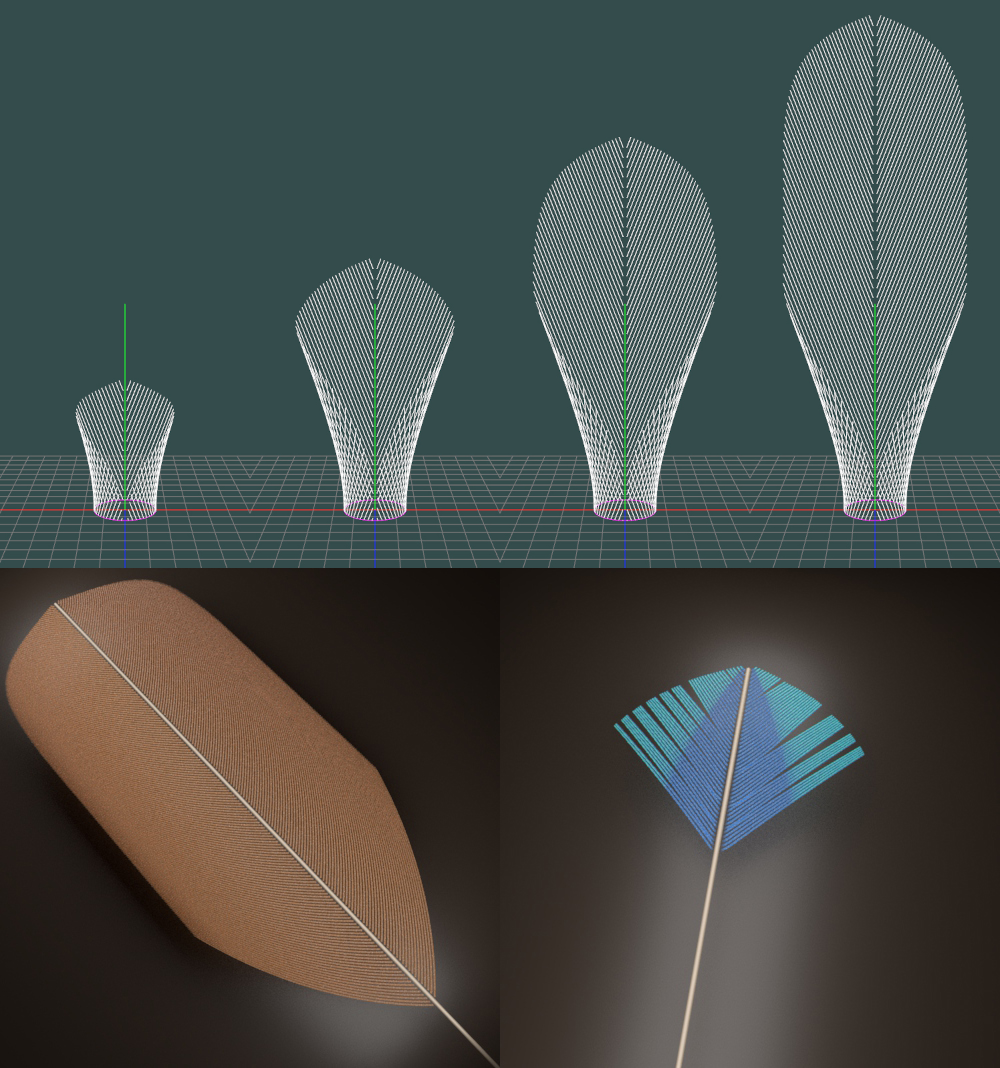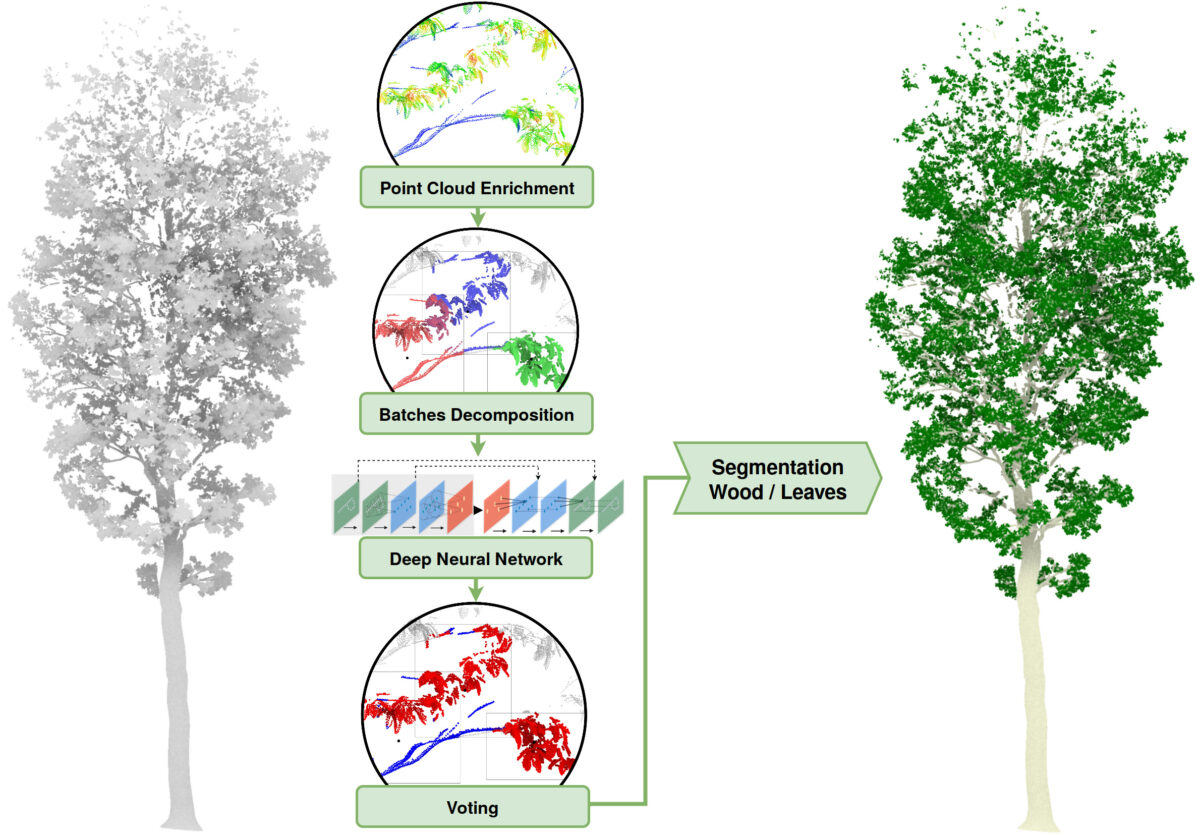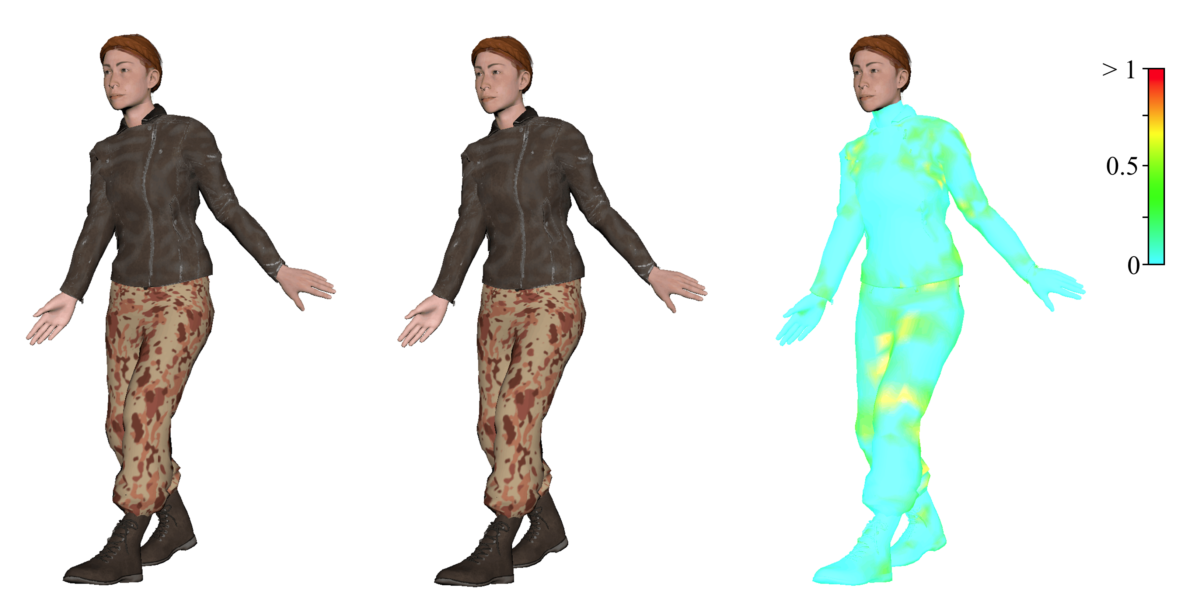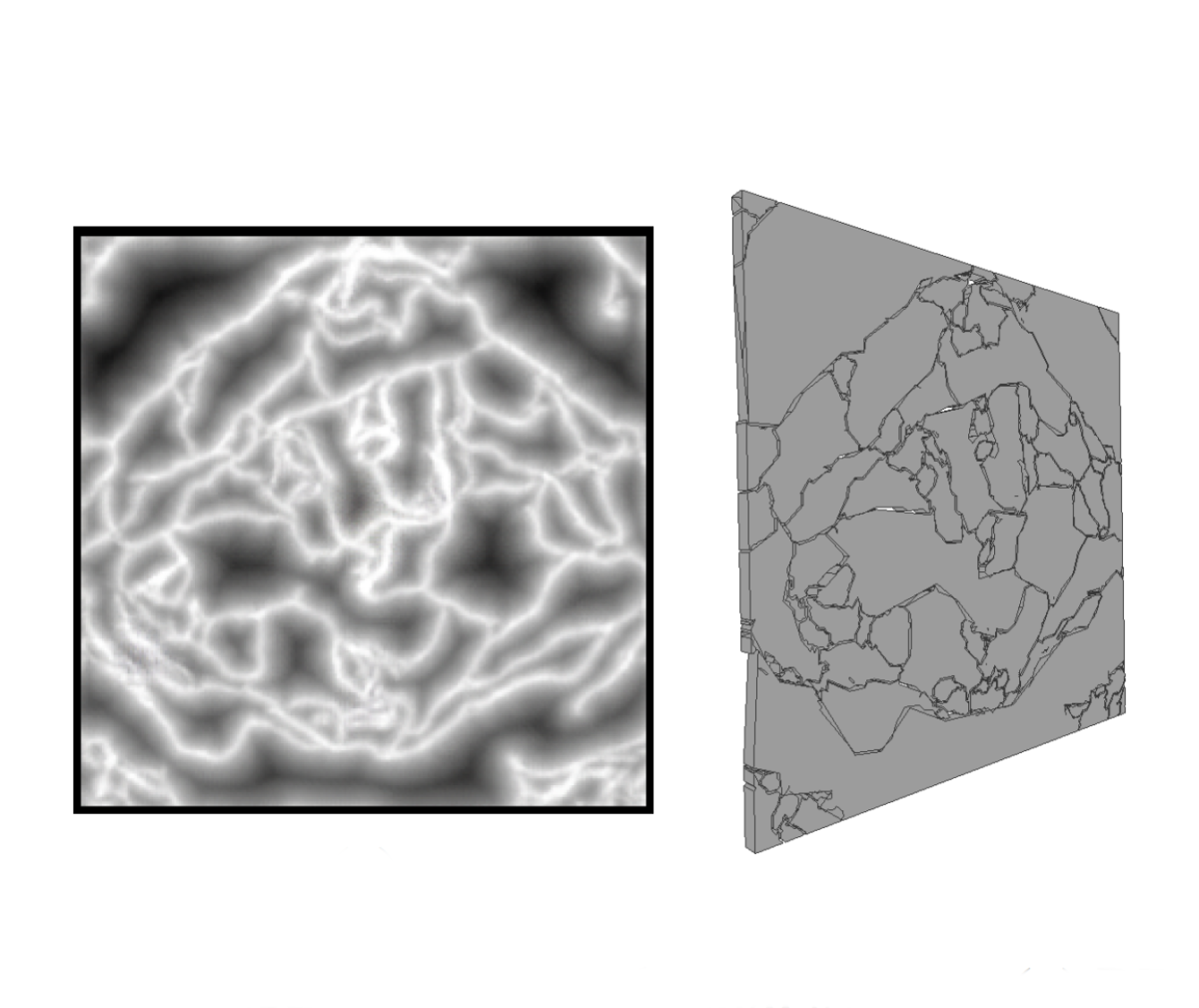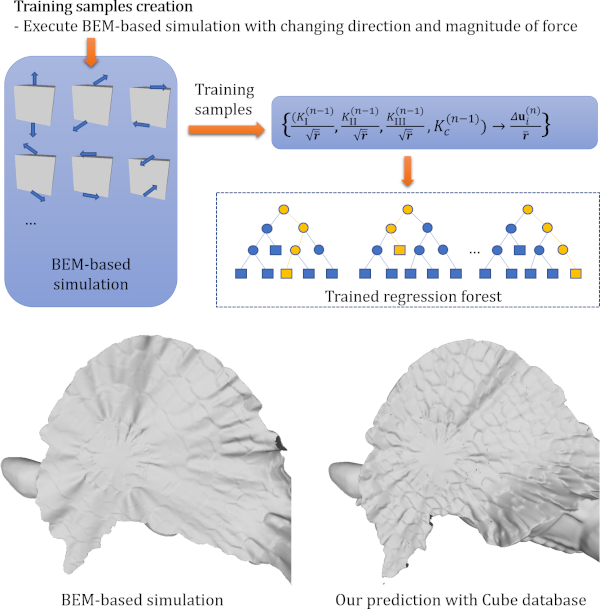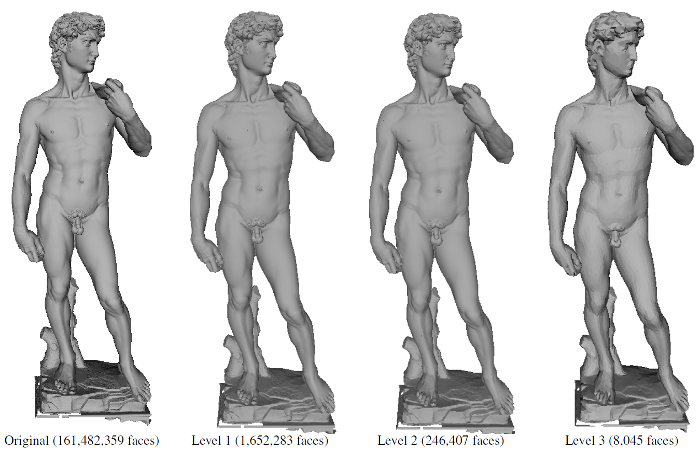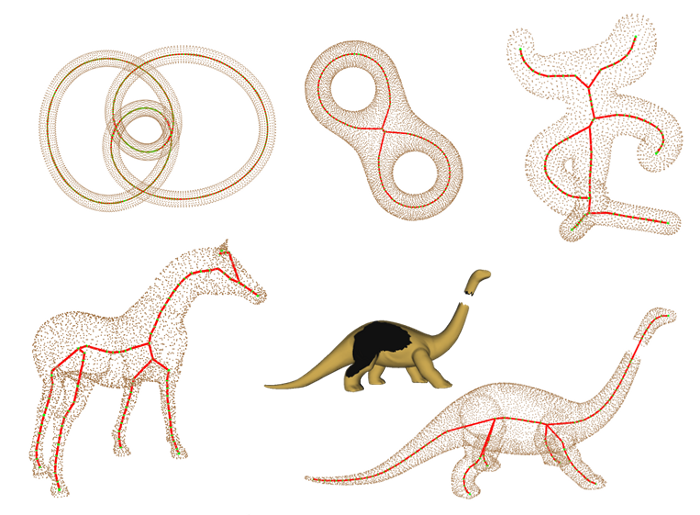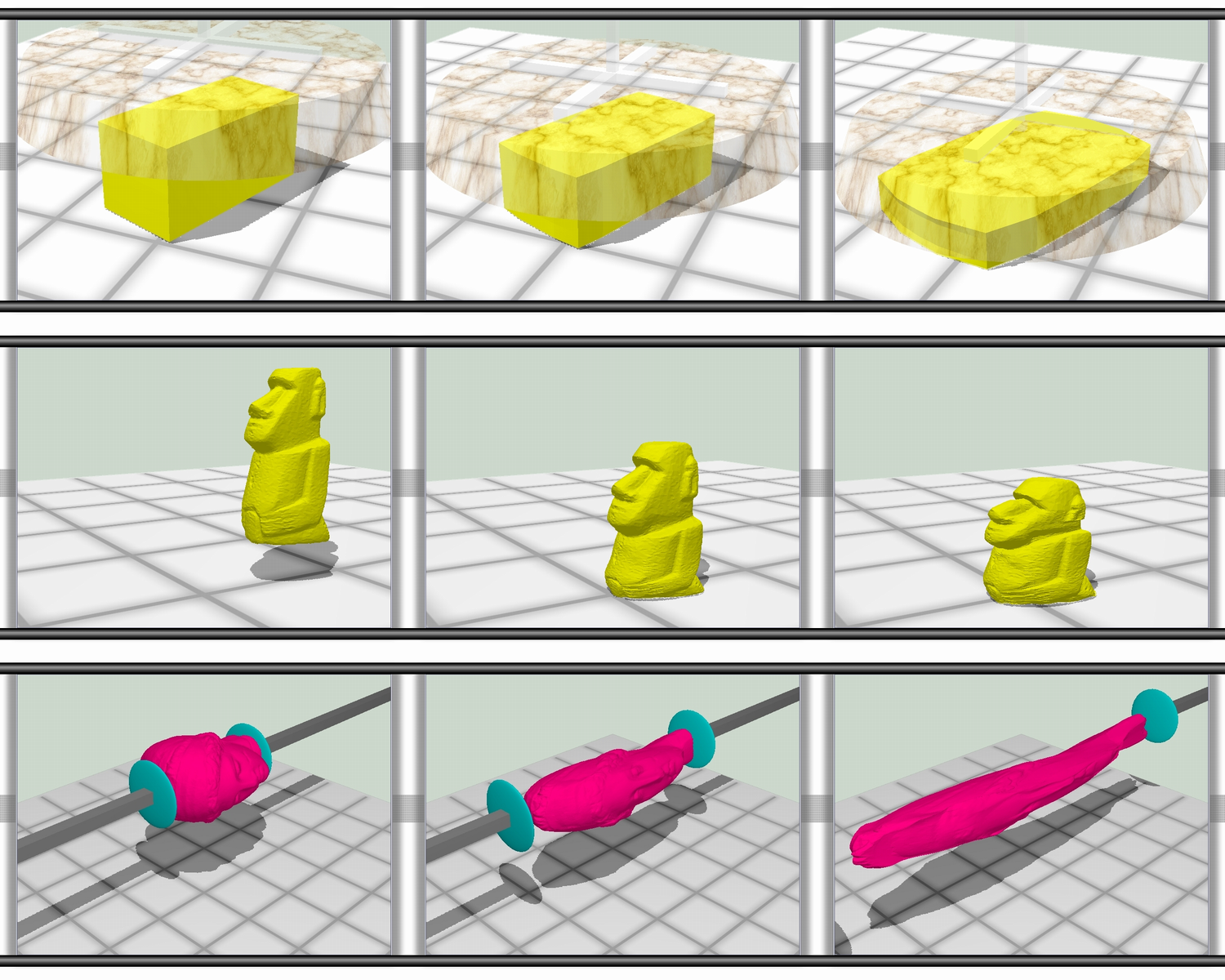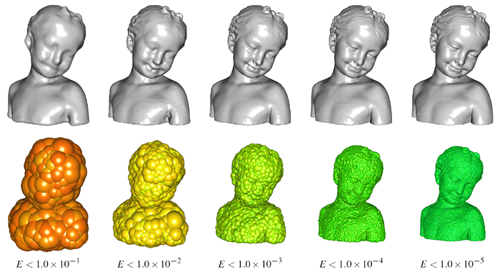Feathers are sophisticated skin appendages on bird skin, with massive fiber curves (called barbs) branching out from a shaft. Each barb uses its hooklets (called barbules) to further interlock with each other and form two surfaces. We propose a biological modeling scheme that follows the natural fea … Continue reading “Biological Modeling of Feathers by Morphogenesis Simulation for Computer Graphics”
Category: Shape Modeling
Segmentation of Unbalanced and In-homogeneous Point Clouds and Its Application to 3D Scanned Trees
Segmentation of 3D point clouds is still an open issue in the case of unbalanced and in-homogeneous data-sets. In the application context of the modeling of botanical trees, a fundamental challenge consists in separating the leaves from the wood. Based on deep learning and a class decision process, … Continue reading “Segmentation of Unbalanced and In-homogeneous Point Clouds and Its Application to 3D Scanned Trees”
DenseGATs: A Graph-Attention-Based Network for Nonlinear Character Deformation
In animation production, animators always spend significant time and efforts to develop quality deformation systems for characters with complex appearances and details. In order to decrease the time spent repetitively skinning and fine-tuning work, we propose an end-to-end approach to automatically … Continue reading “DenseGATs: A Graph-Attention-Based Network for Nonlinear Character Deformation”
Brittle Fracture Shape Generation of 2D Planes Using Deep Learning
Brittle fracture of plane shape objects, such as glass and concrete, is often seen in the real world. Fracture animation of rigid bodies provides impressive effects by using physics-oriented simulation. However, simulation costs become too high when physics-oriented simulation approaches are chosen … Continue reading “Brittle Fracture Shape Generation of 2D Planes Using Deep Learning”
Data-Driven Approach for Simulating Brittle Fracture Surfaces
In this paper, we propose a novel data-driven method that uses a machine learning scheme for formulating fracture simulation with the Boundary Element Method (BEM) as a regression problem. With this method, the crack-opening displacement (COD) of every correlation node is predicted at the next frame … Continue reading “Data-Driven Approach for Simulating Brittle Fracture Surfaces”
Out-of-Core Framework for QEM-based Mesh Simplification
In mesh simplification, in-core based methods using Quadric Error Metric (QEM), which apply a sequence of edge-collapse operations, can generate high-quality meshes while preserving shape features. However, these methods cannot be applied to huge meshes with more than 100 million faces, because they … Continue reading “Out-of-Core Framework for QEM-based Mesh Simplification”
A Robust and Centered Curve Skeleton Extraction from 3D Point Cloud
A curve skeleton of a 3D object is one of the most important structures of the object, which is extremely useful for many computer graphics applications involving in shape analysis. Much research has focused on volumetric and polygonal mesh models. However, only a few have been paid attention to poi … Continue reading “A Robust and Centered Curve Skeleton Extraction from 3D Point Cloud”
Robust MLS Projection Operator for Point Clouds
In this research, we propose a robust projection operator for noisy point clouds with outliers. The operator is an extension of Moving Least Square (MLS) projection and inherits its smoothing property. A key idea is to compute average positions and projection directions to prevent the influence of o … Continue reading “Robust MLS Projection Operator for Point Clouds”
Volume-Preserving LSM Deformations
Surface deformations based on physically-based simulations are used to represent elastic motions such as human skins or clothes in the field of 3DCG applications. LSM (Lattice Shape Matching) [Rivers and James 2007] has particularly attracted attention as a fast and robust method which achieves elas … Continue reading “Volume-Preserving LSM Deformations”
Hierarchical Approximation of Implicit Surfaces from Meshes
This paper describes an efficient method for the hierarchical approximation of implicit surfaces from polygonal meshes. A novel error function between a polygonal mesh and an implicit surface is proposed. This error function is defined so as to be scale-independent on its global behavior as well as … Continue reading “Hierarchical Approximation of Implicit Surfaces from Meshes”
